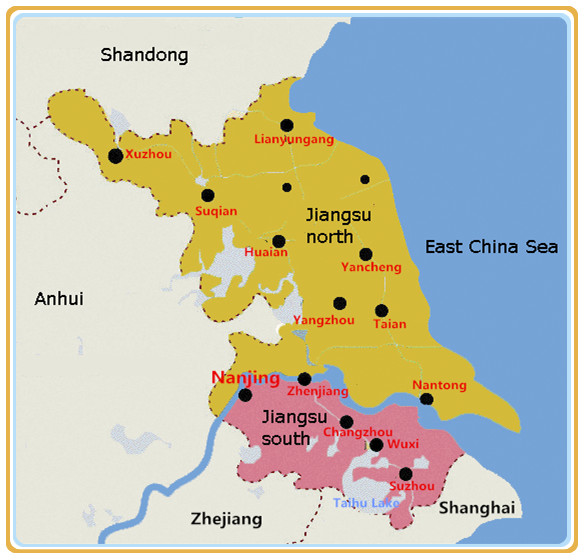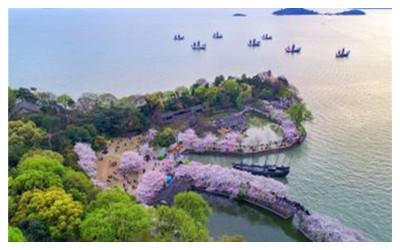Skype: neodalle-travel
Tel: +86 135 7447 2266
E-mail: sales@zhangjiajieholiday.com
 Jiangsu Location
Jiangsu Location
Jiangsu Landmark
 Located in Yangtze River Delta, most of its land is flat, two of five largest freshwater lakes in China, hilly southwestern and northern borders. Jiangsu is a place of typical Jiangnan (south of the lower reaches of the Yangtze River) landscapes, represented by classical gardens and water townships. An old saying goes this way: 'the gardens south of the Yangtze River are the best under heaven and among them the gardens of Suzhou are the best'.
Located in Yangtze River Delta, most of its land is flat, two of five largest freshwater lakes in China, hilly southwestern and northern borders. Jiangsu is a place of typical Jiangnan (south of the lower reaches of the Yangtze River) landscapes, represented by classical gardens and water townships. An old saying goes this way: 'the gardens south of the Yangtze River are the best under heaven and among them the gardens of Suzhou are the best'.
The Yangtze River, the longest in China and the third longest in the world after the Nile and the Amazon, cuts through the heart of the country marking the division of China into north and south both geographically and culturally. This cut also divides Jiangsu into two parts, the north and the south of the province.
The Southern part of Jiangsu includes Suzhou, Wuxi, Changzhou and Zhenjiang Cities, and most part of Nanjing. The Northern part embodies the rest of the province. Join us to discover differences of its great humanity, culture and time-honoured history.Taihu Llake, located in south of Jiangsu Province, is one of the five biggest fresh water lakes in china.
Due to its excellent environmental conditions and geographical advantages, Jiangsu has been a relatively developed area since ancient times. Situated along the Yangtze River, the area is mostly covered by fertile plains, fresh-water rivers and lakes. It belongs to a transition zone from warm temperate zone to subtropical zone, featuring mild temperature and hot rainy season. All these have helped the area to develop its agriculture. No wonder it has long been called 'a land of fish and rice'. What's more, its coastal location is very convenient for communication with the outside world, leading to its fast development in both imports and exports.
Topography
Located in the beautiful and prosperous Yangtze Delta, Jiangsu has a large area of plain as its typical topography mainly consisting Sunan (South Jiangsu) Plain, Jianghuai (the Yangtze River and Huai River) Plain, Huanghuai (the Yellow River and Huai River) Plain and Eastern Seashore Plain, and dotted with Tai Lake and Hongze Lake which are among the top five freshwater lakes in China. Jiangsu thus enjoys the superiority of its natural condition and lays a solid economic foundation.
Rivers and Lakes
Jiangsu has numerous lakes and a dense network of waterways, with the Yangtze River traversing over 425 km from the east to the west, the Beijing-Hangzhou Grand Canal down 718 km from the north to the south, Qinhuai River in the southwest, the Subei (North Jiangsu) General Irrigation Canal, Xinmu River and the Tongyang (Nantong and Yangzhou) Canal, etc in the north. Altogether Jiangsu has over 290 lakes of all kinds and two of the top five freshwater lakes in the country, Tai Lake and Hongze Lake, inlaid in Jiangnan (south of Yangtze River) water towns and North Jiangsu respectively like two bright mirrors.
 Ask Questions ?
Ask Questions ?